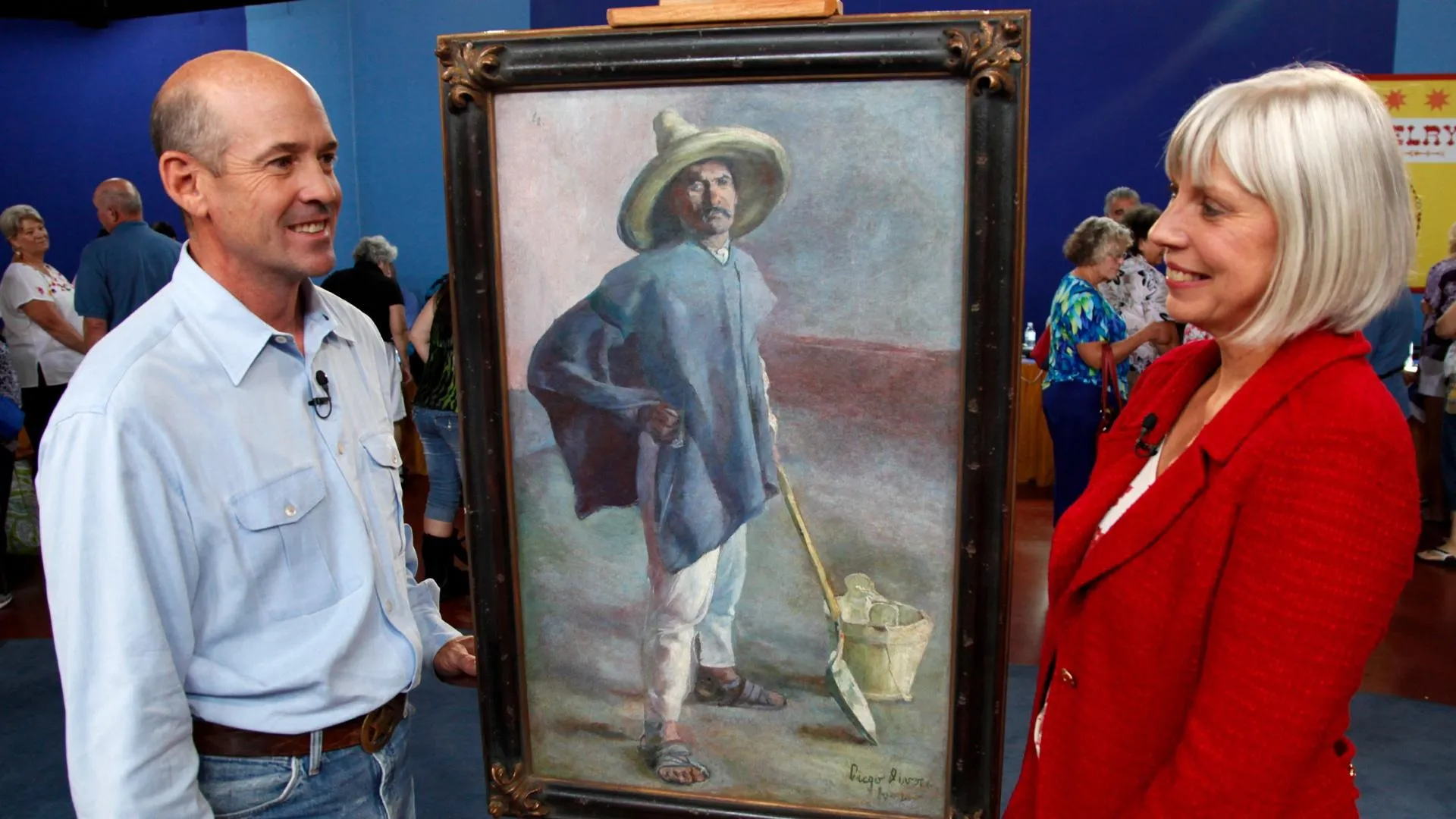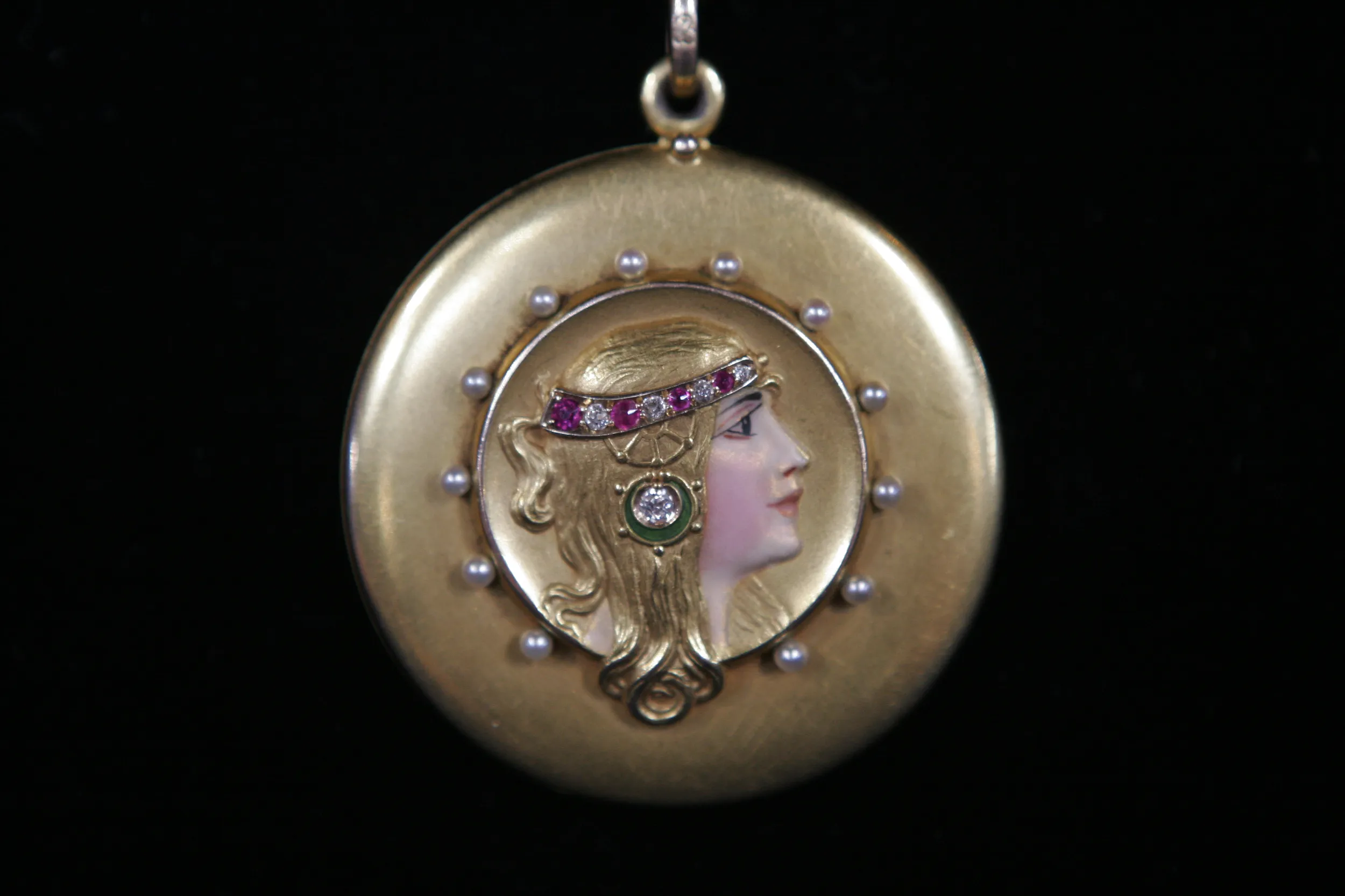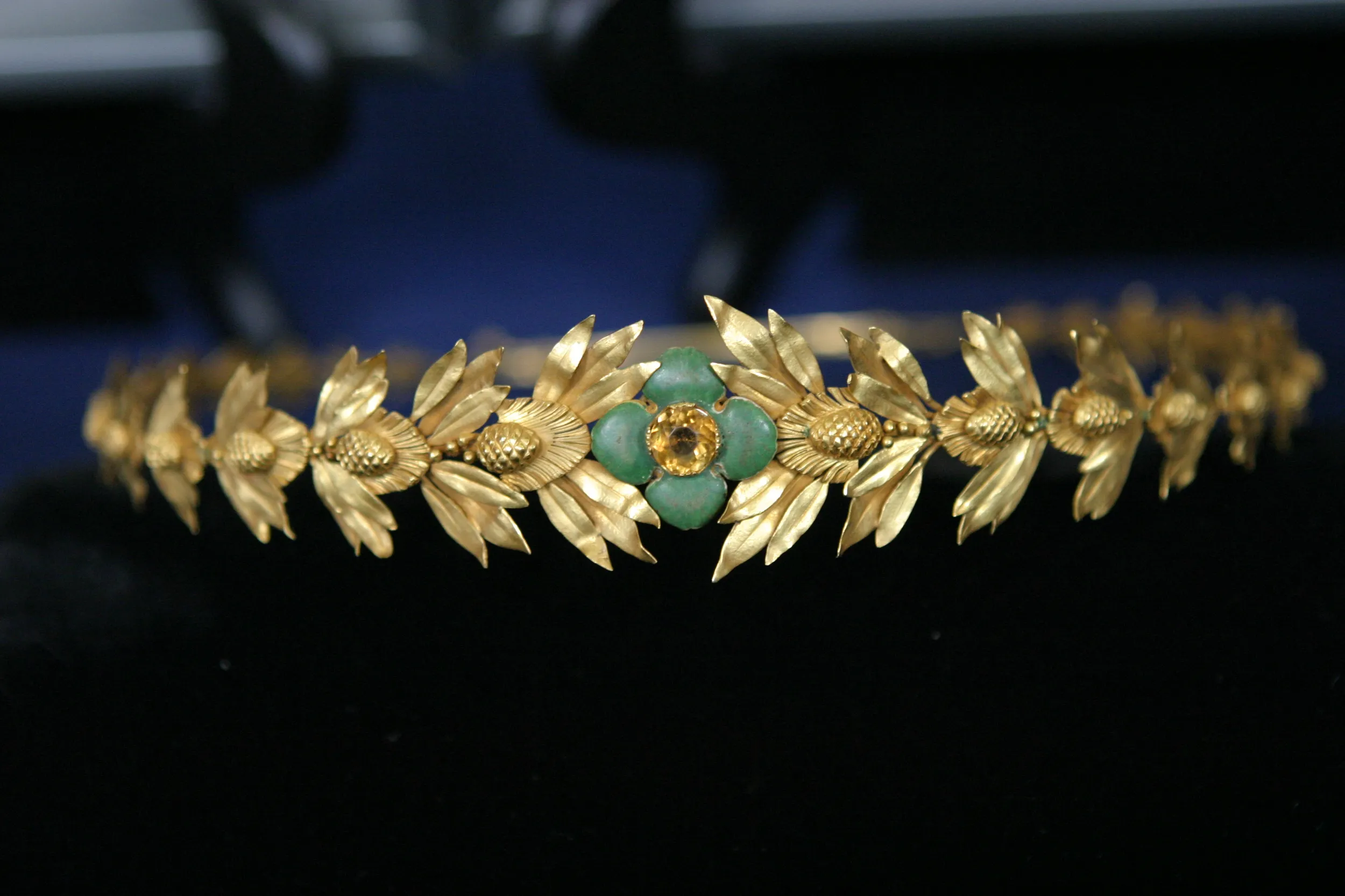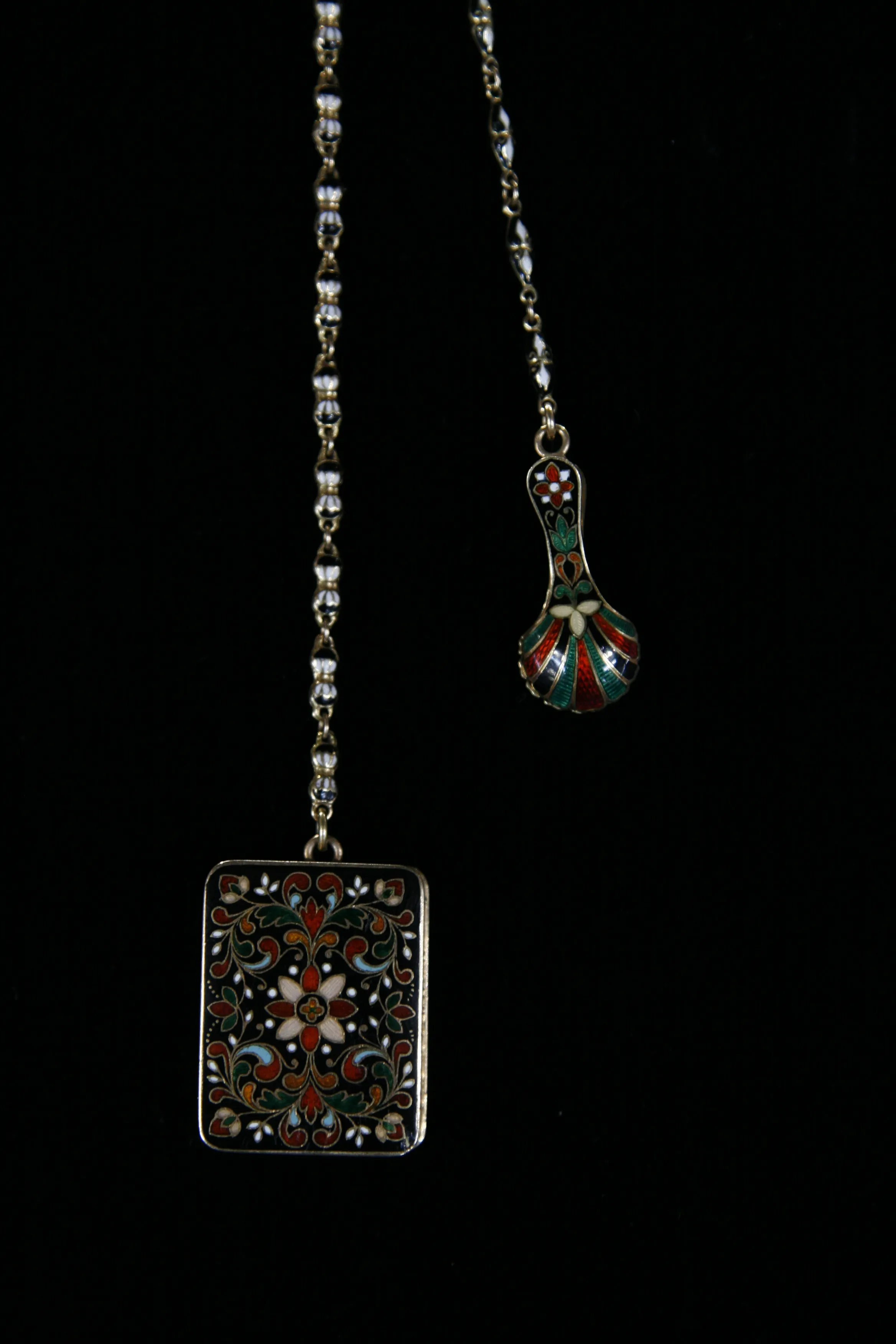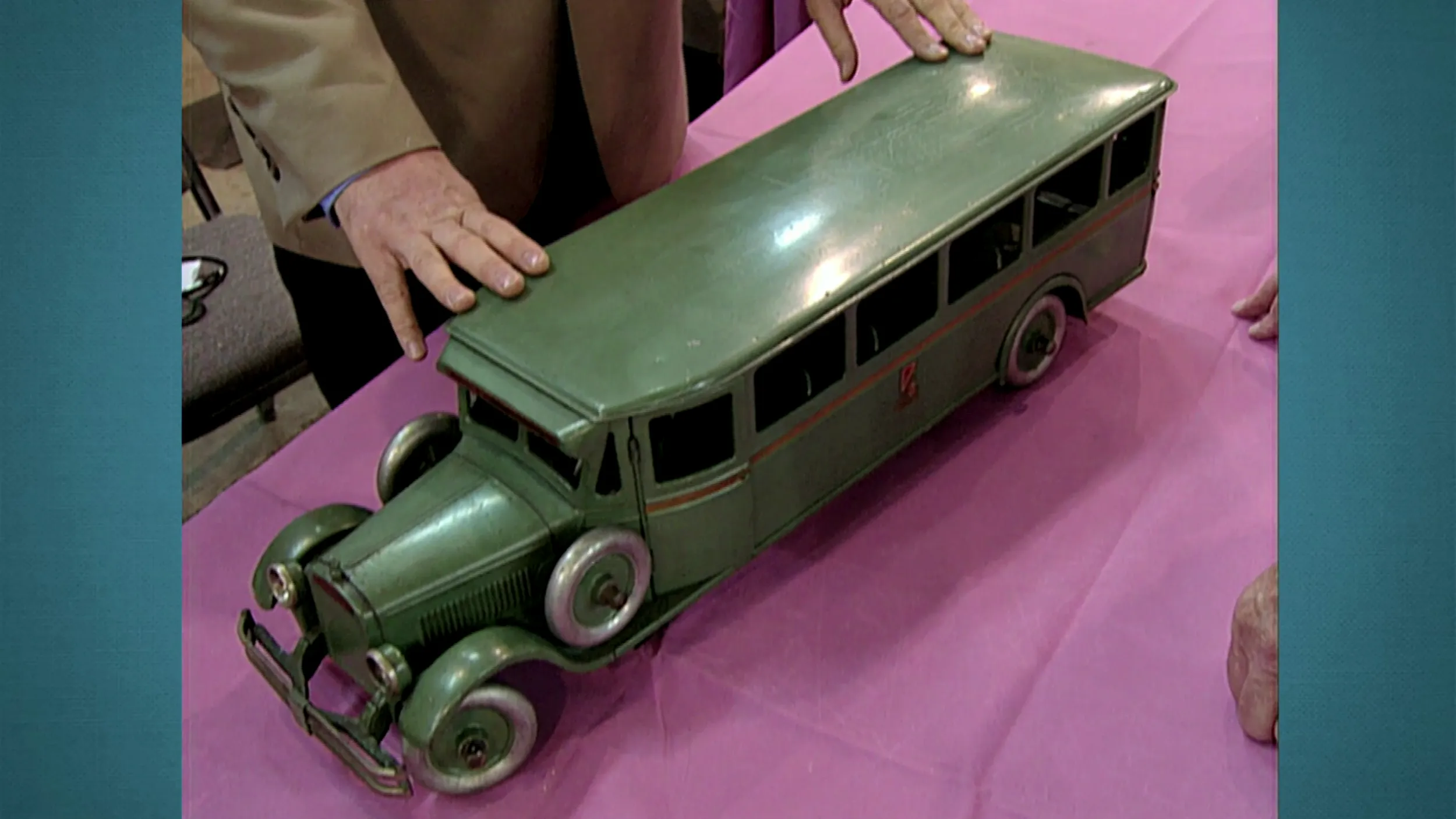GUEST: They are family pieces from my mother-in-law, and my first grandmother-in-law. The grandmother-in-law was married in 1902, and the mother-in-law was married in 1925. So these pieces were possessed by each of them.
APPRAISER: Well, the one nearest you was made in France. It's marked on the bottom "K&G Luneville, France." K&G is the initials of the manufacturer, which is Keller and Guerin. It dates to the 1890s, and it has transfer-printed flowers-- kind of daisies on it-- with over-enameling of leaves, which is all done by hand. This one, the Rookwood pottery, is a little later than that. It was made in 1921. So on the underside, we have a typical Rookwood Pottery mark. It's the letters R-P, surrounded by flames. And underneath that is the Roman numerals XXI, which stands for 1921. Underneath that is a number, which is the model number. And underneath that is the monogram of the designer, which is a woman named Sara Sax. Underneath that is an original retailer's label, which is really nice to have. In the 1920s, most of the designers at Rookwood were men. But one of the very best designers was Sara Sax, who really held her own in a world of men designers and decorators. And she's considered by many to certainly be one of the top five designers during that time period. Rookwood created some new ceramic bodies and new glazes and new colors. And one of the colors that they created is this one, which is called French Red. Now, French Red is sometimes... has incised designs like these black designs here. And then it also has sometimes raised enameling, like the exotic green and blue peacocks on the side. Another attribute of the French Red color is the black interior, which is something that really sets off the red color. Had anyone in your family speculated about which piece might be the most valuable?
GUEST: No.
APPRAISER: No?
GUEST: No, we didn't. We just look at them. Because they've been there so long, nobody really looks and pays much attention to them.
APPRAISER: Right. Well, the one nearest you is nice, but not terribly valuable. A value on that would probably be somewhere between $100 and $150 on a retail level.
GUEST: Really?
APPRAISER: The Rookwood is a bit more valuable. Now, a production piece of Rookwood-- meaning one that was not decorated by an artist like Sara Sax-- this size, which is a fairly large size, would probably be worth in the mid-100s. And other artist-signed pieces in more typical designs and glazes would normally be worth somewhere perhaps in the $1,000 to $3,000 range. Again, in this size, depending on the decoration and the decorator, sometimes a bit more. But the French Red is quite rare and very desirable. So therefore, the Rookwood piece, a retail price would be somewhere between $10,000 and $15,000.
GUEST: My goodness. Hmm. Well, that's considerably more than I had estimated. Well, we'll be more careful of it.
APPRAISER: Sure.

